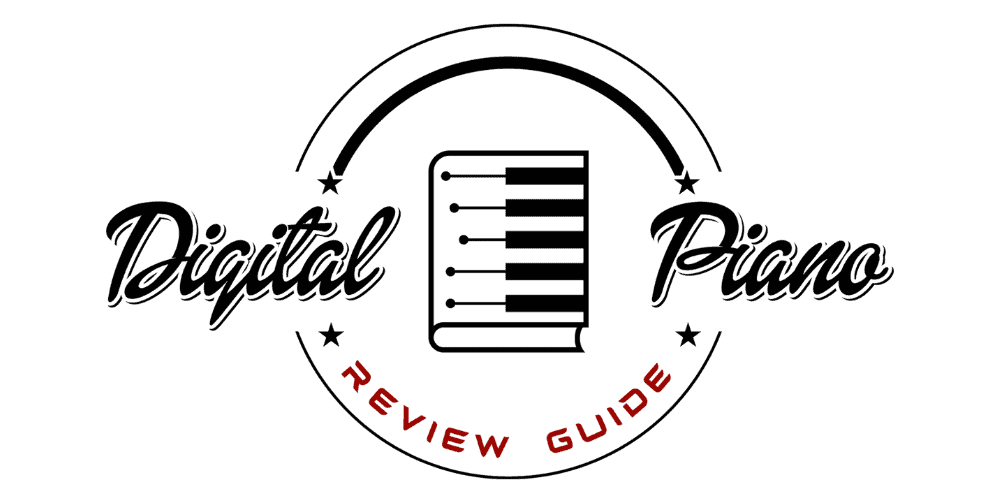Casio Celviano AP-420 piano review

Casio has had a lot of success promoting, marketing, and selling many of their digital piano lines. Two of the most prominent series they have are the Privia and Celviano lines. However, what many people don’t know is that the two piano series are directly related. Casio has enjoyed a lot of success with the Privias, so they decided to bring the latest technology from those machines and incorporate them into a traditional cabinet design. Thus the Celviano line was born.
I think that the Celviano pianos are wonderful machines. I also believe that they are a direct response to the wild success of the world wide renowned Yamaha Clavinova pianos. Clavinovas have had great success, and prove a wonderful example to observe. Although this is simply my opinion, I believe it shouldn’t be a bad thing. There is nothing as great as competition. If one brand had a complete domination of the market, how would they ever be motivated to produce a great machine? This is exactly what I think has happened with the Casio Celviano, and I think they should keep doing it.
The Celviano AP-420 is one of the frontline pieces for the Celviano line, along with the AP-220, and the flagship piece, the AP-620. Each piano has an increasing level of functionality and features with the 420 sandwiched in between the 620 and the 220. However, each one is a great machine in its own right, and it simply depends on the needs of the consumer.
Piano Buying Guide
Below, please enjoy the interactive guide that was created to make your piano purchase easier. Compare the Casio AP-420 to other popular digital pianos on the market today:
| Photo | Model |
|---|---|
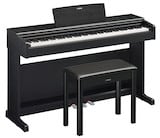 | Yamaha YDP-145 |
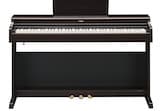 | Yamaha YDP-165 |
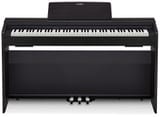 | Casio PX-870 |
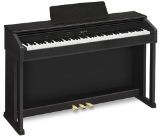 | Casio AP-470 |
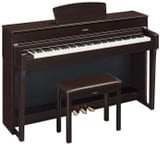 | Yamaha YDP-184 |
Casio AP420 Review
The AP-420 will be quite a load coming in the box, weighing in at 141 pounds. Inside the box will be both the piano and bench, and in some bundle cases, headphones and more accessories. Once you’ve opened up the box and assembled it, it will weigh around 82 pounds, which is less than some models, but surely not light by any means. It’s a tad bit longer than some 88-key pianos at 54 inches, but has a customary height of about 32 inches. Once you find a desirable space, however, there should be no problem fitting in with the rest of your furniture. There are only two color variations, with a general black wood tone finish, and an oak wood tone finish.
One of the biggest changes that set the 420 apart from other digital pianos and consoles is the daunting speaker system. Two mega 20-watt amplifiers power both 12-centimeter speakers, providing a clear and booming sound to give this piano an overall grandiose presence. I myself was a little bit shocked by its power and force, and I quickly understood the need for headphones on a machine like this. This Celviano could easily hold its own in a real concert hall type performance, so something this powerful sitting in a person’s living room would easily wake all the kids up, if not the whole neighborhood. Luckily it does come with not one, but two appropriate headphone jacks so you and a friend, or a student and a teacher, can enjoy the sweets sound of the piano at the same time.

Below, take a look at some of the best selling upright digital pianos online, and see how they compare to the Casio AP-420:
| BEST SELLERS |
|---|
| 1) Casio PX-770 |
| 2) Yamaha YDP-145 |
| 3) Roland RP-701 |
| 4) Yamaha YDP-165 |
| 5) Casio PX-870 |
The Sound of the Casio Celviano AP-420
The AP-420 comes with 16 built-in tones, all which range from grand pianos, strings, electric pianos, organs and basses. The bread and butter for me, however, was the grand piano sound. It possibly could have been the sound system which brought out the concert piano in a way I’d never heard from a digital upright before, but nevertheless I was able to hear the crispness of the high and low ranges of the notes.
This grand piano sound is backed by Casio’s AiF Linear Morphing system. AiF is the predecessor to Casio’s Acoustic and Intelligent Resonance sound source system that you’ll find in a lot of their high-end Privia’s. The AiR is able to use more than three times the memory of AiF, but that doesn’t mean AiF doesn’t pack a punch. AiF is still excellent technology that draws from four different samples of optimum concert piano key pressures, using linear morphing to smooth out the breaks and produce a performance that is exactly tailored to how you play the piano. Basically, it’s going to sound like a real, live piano, whether you play pianissimo or fortissimo.
Other Features
The AP-420 also has 128-note polyphony, which if you ask any piano player is more than enough when it comes to digital pianos. This piano is designed to be able to handle the most difficult of pieces with the most demanding of note ranges. 128 notes of polyphony will ensure that you will never hear a dropped note, or a mushing of the sound when using the pedals to maintain the sound. Picture it like this: Even if you were able to get 12 different people to play this piano at the same time, the AP-420 would be able handle each and every note without dropping one.
The feel of the keys are absolutely wonderful, and they are backed by Casio’s 88-key Tri-Sensor Scaled Hammer Action system. This hammer action technology beautifully replicates the action of a real acoustic piano by reproducing the weight and hammer strike of real keys against a piano string. Three sensors built into the mechanism of each key measure the speed of the hammer against the velocity with which the pianist plays, giving it a wonderful response. Not to mention the black keys have a beautiful matte finish, which gives the AP-420 a classy look and feel.
The AP-420 comes with a class compliant USB port, meaning that it will be able to plug and play into any computer or MIDI device, allowing you to transmit information from the piano to the computer. If the USB doesn’t work for you, it also has a handy SD Card slot that you can use. Also, it has a brilliant layer and split functions, along with duet mode, which allows the piano to divide into two equal portions, perfect for teacher and student.
Conclusion
All in all, the Celviano AP-420 is a wonderful machine that would great for any pianist looking for the look and feel of a real piano but not the price. It has a list price of $1,400, but you should be able to find it available online for less than $1,000. And if you can’t find it, or notice that it’s all sold out, you can certainly consider the Casio Celviano AP-250, which we have reviewed as well (please see below)
You Might Enjoy:
4) What’s the Best Casio Digital Piano?
